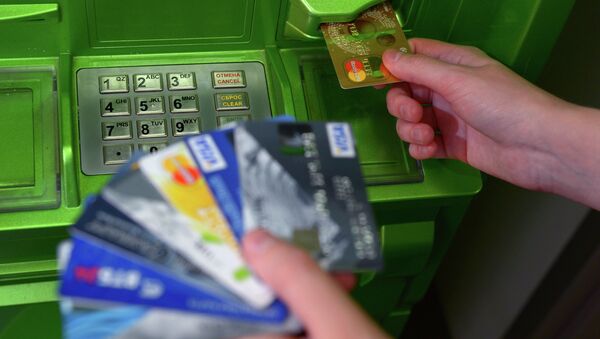US stocks fell by roughly 3% on Wednesday amid poor economic news from around the world. Fears that Germany and the United Kingdom could enter a recession next quarter, the Argentine stock market’s 38% collapse earlier in the week and continued economic problems in China and the US due to the trade war between them all helped contribute to the anxiety. However, when the news broke that short-term US Savings Bonds were yielding higher returns than long-term ones, investors started selling like crazy, because that situation has preceded every single recession in modern history.
However, the problem isn’t really whether or not unemployment is at record lows or whether the US central bank sets interest rates higher or lower than before. Steve Keen, the author of “Debunking Economics” and the world’s first crowdfunded economist, whose work is at patreon.com/ProfSteveKeen, told Radio Sputnik’s Loud and Clear Thursday that the real cause of economic anxiety was “a bucketload of private debt.”
Keen said that what’s driving the present situation is “basically what the leftovers from the 2008 financial crisis that most economists completely ignore, and the Fed not knowing what the hell it’s doing and actually making things worse.”
“What conventional economics leaves completely out of its thinking is the level of private debt. They think that all that matters is government debt, and that’s what all of the policy wonks obsess about. And they ignore private debt, because in the banks-as-intermediaries model that’s still stuck in the heads of all the people who’ve done an economics degree and not realized they were being sold a pup, is that private debt just transfers spending power from one person to another.”
“So you can have a huge level of private debt, and that means the debtors can spend more than the savers, or you can have a really low level, and that means that savers spend more than debtors, and the two cancel each other out, so you don’t need to worry about it,” he explained.
“That is completely wrong, because banks lending money actually creates money, and that creates additional spending power. So, a rising level of debt gives you a rising level of economic activity - until you hit the wall. Eventually, people can’t afford to service their debt anymore. That’s the situation we’ve been in since 2008. In the American case, private debt peaked at 170% of GDP [gross domestic product] and has now fallen to 150%.”
“When the Federal Reserve, ignoring that, puts up interest rates in the belief they’ll just try to control an economy that might be starting to overheat because of low unemployment, they actually increase the burden on people who are carrying that debt, and they decide to de-lever. So you fall back into a slump again. And this is what we’re going through now. We’re just repeating the same mistake that Japan made back in 1990,” Keen told hosts Brian Becker and John Kiriakou.
Keen noted that credit card debt from increasing purchasing by consumers was “the most volatile part of demand,” saying that credit cards’ maximum limits place upper bounds on how much spending can increase. When consumers decide to pay off their debts, that means they stop creating money for companies by purchasing goods on credit, and that reduces the money supply.
“That’s the bottom line behind all of the shenanigans that we’ve seen recently,” Keen said. “That’s what’s been driving the ups and downs of the economy. But the Fed completely ignores this stuff.”
“You get a kick from the change in debt; you get a stab in the back or the ankle from the interest on the level of that standing debt,” he noted. “Those are the two factors working either way.”
“So when there’s a boom going on, because the rate of creation of new money is the change in debt, that clears much, much higher than the level of interest. But if the economy starts to falter, as we’re seeing right now, then that can go down to zero, but you still have to pay interest on the debt,” Keen explained.
“Particularly, if you put up the interest rate, which is what the Federal Reserve has been doing for the last few years, that increases the interest rates component of that debt drag, and as it keeps on going up, firms decide to put off investment, they’ve got higher debt servicing costs, and they stop investing, and the economy slows down.”

